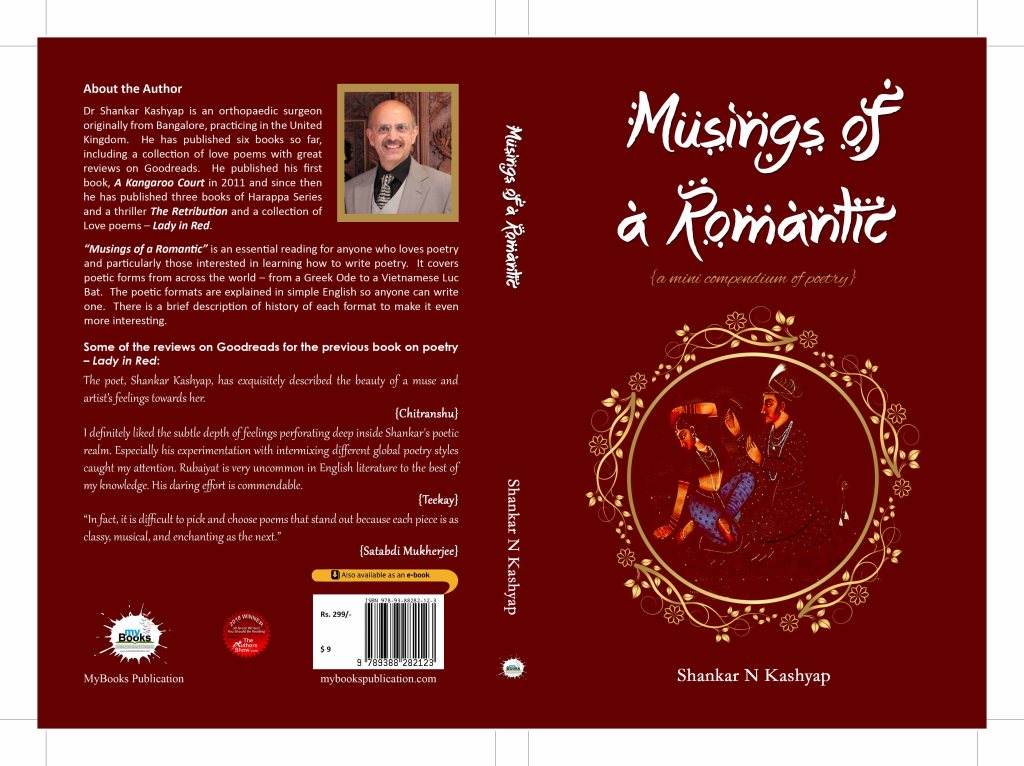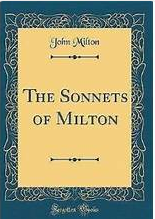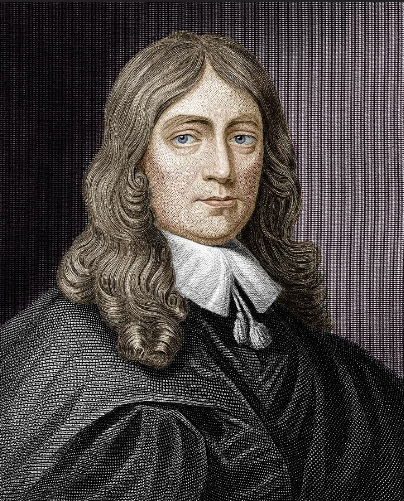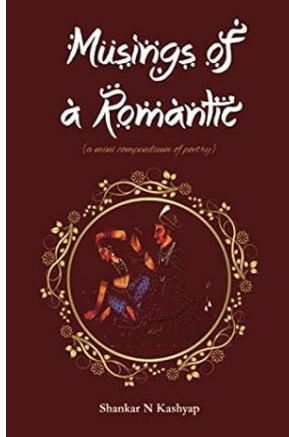The original sonnet form was invented in the 13th century by a 13th century poet by the name of Giacomo da Lentini and took the name of an Italian philosopher named Francisco Petrarch. The sonnet, from the Italian sonetto meaning “little song,” is one of the better-known forms of poetry. Made famous by Italian poets, the traditional sonnet contains fourteen lines divided into two stanzas of eight and six lines. The original Petrarchan sonnet did not have a definitive structure or rhyme scheme and different poets have given their own poetic spin over the centuries. One thing that stayed true is the theme of a proposition and resolution.
The first octave gave out a proposition and next sestet offered a resolution. Petrarchan sonnets lent themselves very well for rhyming Italian language and probably explains why it did not appear in the ‘rhyme poor’ English for the first couple of centuries. The form remained largely unknown until late 16th century it was rediscovered by Thomas Wyatt and further developed and popularised by writers such as Shakespeare. Sonnets now generally use iambic meter in each line and use line-ending rhymes. Although Shakespeare is famous for his plays, he also wrote 154 sonnets (not including the numerous couplets and short verses that appear within his plays).
Shakespearean sonnets are lyrical poems featuring two contrasting characters, events, beliefs or emotions. This made a sonnet very useful tool in his plays. He used the sonnet form to examine the tension that exists between the two elements – could be two different individuals or two different emotions or situations. Several variations of sonnet structure have evolved over the years. The most common type — and probably the simplest — is known as the English or Shakespearean sonnet. In his sonnets each line has 10 syllables and are written in iambic pentameter. Iambic pentameter is a pattern in which an unstressed syllable is followed by a stressed syllable repeated five times. The da-DUM sound of the human heartbeat is sometimes used as an example of iambic pentameter (literally “five feet”): da-DUM, da-DUM, da-DUM, da-DUM, da-DUM. The opening line of Shakespeare’s “sonnet 12” provides a good example of the da-DUM rhythm of iambic pentameter: ‘When I do count the clock that tells the time…’.
Some of Shakespearean sonnets are made up of three quatrains and a closing couplet. These sonnets follow a specific set rhyme pattern — a-b-a-b / c-d-c-d / e-f-e-f / g-g — and the last two lines form a rhyming couplet. Shakespeare’s “sonnet 18” — sometimes called “Shall I compare thee to a summer’s day?” — is one of his most famous sonnets:
Shall I compare thee to a summer’s day?
Thou art more lovely and more temperate.
Rough winds do shake the darling buds of May,
And summer’s lease hath all too short a date.
Sometime too hot the eye of heaven shines,
And often is his gold complexion dimmed;
And every fair from fair sometime declines,
By chance, or nature’s changing course, untrimmed;
But thy eternal summer shall not fade,
Nor lose possession of that fair thou owest,
Nor shall death brag thou wanderest in his shade,
When in eternal lines to time thou growest.
So long as men can breathe or eyes can see,
So long lives this, and this gives life to thee.
The Shakespearean sonnet followed the standard volta of Petrarchan sonnet— or the “turn” — which is the point in the sonnet where there’s a change from one rhyme pattern to another that also signals a change in subject matter from proposition to resolution. In the example above, the volta occurs in the ninth line when the word “But” signals a subject change and the rhyme pattern changes to e-f-e-f.
In addition to the English or Shakespearean sonnet, the Spenserian sonnet (named after poet Edmund Spenser) gained popularity during the 16th century. The Spenserian sonnets had a different rhyming pattern – ABAB BCBC CDCD followed by a refrain of EE. He introduced linking of several couplets (instead of quatrains) as can be seen in the rhyming structure. Amoretti is probably the best recognised of his works. There are also more obscure types of sonnets, some of which have no recognizable rhyming pattern. 17th century also saw the introduction of ‘Sonnet sequences’ – a sort of an epic dealing with the same or linked subject through several sonnets. ‘La Corona’ by John Donne has seven sonnets and Sonnet redouble has fifteen sonnets! The linking was done by using the last line of the first sonnet in the first line of the second and so on.
Over the years, many poets and writers have written sonnets. Some of the more famous sonnet authors include John Donne, John Milton, Ezra Pound, Elizabeth Barrett Browning and Edna St. Vincent Millay. 17th century saw a profusion of sonnets from famous poets such as Wordsworth, Keats and Shelley. Modern poets have moved away from strict rhyming structure and often recognised only by fourteen lines or by the name.
Over the years several variations of the sonnet have emerged –
Caudate sonnet; Adds codas or tails to the poem.
Curtal sonnet; Designed by Gerard Hopkins. Substitutes two tercets for two quatrains in the octave and four and a half lines for the sestet (DEBDE)
Sonnet redouble; Also known as the crown of sonnets, is composed of 15 sonnets linked together by final line of first sonnet as the first line of the subsequent sonnet, final line of that sonnet is the same as the first line of the previous one. The final sonnet has all the repeated lines of the previous 14 sonnets in order.
Sonnet sequence; A group of sonnets dealing with the same subject.
Stretched sonnet; One where the sonnet is literally stretched 16 lines or more.
Submerged sonnet; A sonnet literally submerged with another longer poetry format.
Most of the sonnets are written on Love. Love is a four letter word which has produced every emotion known to man. It has been the cause of heartaches, wars, bitter battles, fights and any shenanigan you can think of. Countries have gone to war to fight over loved ones. The story of Helen of Troy is a prime example. Agamemnon takes the massive Greek army and lays siege on the city of Troy to win back the princess to his brother from the Troy prince, Paris. Who has not of heard of the eternal lovers – Romeo and Juliet – so well immortalised by William Shakespeare. As are the other lovers in history – Mark Antony – Cleopatra, Tristan – Isolde, Orpheus – Eurydice, Napoleon – Josephine, Laila – Majnu, Salim – Anarkali, Shah Jehan – Mumtaz – the list is endless.
Love is an emotion that is different to different people. To a child the love of mother, to a mother to her child, brother to sister, father to son and finally the love of passion. It is the first major hurdle to a boy or a girl as he or she passes the step of adulthood.
The poems in this section, deals with ups and downs of lovers the world over. Here is one of my earliest efforts at a sonnet. I have tried to use simple English and used the Shakespearean rhyming pattern, as much as possible with some poetic justice. ‘A Love lost and found’ was one of my first attempts at writing poetry in sonnet form.
A Love lost and found
You came into my life like a breath of fresh air
Your laughter and a smile of thine was my tonic
I loved you from the day I saw you first there
In my blood, my heart and in my ear like a fillip
You did not know me, nor did you see me
You were laughing at the way I spoke, I walked
It was hurting that I did not exist, woe is me
Many a day I wandered in and out and I stalked
You saw me but as one would furniture, I dread
I was always there in your heart, thou did not know it
It was painful to watch, my life hanging by a thread
Jasmine, Roses and Jacaranda in bloom, many willing it
That’s when you saw me first, floundering in a sea
Lifted me up and kissed me on my lips for all to see.
Shankar Kashyap
Musings of a Romantic is a mini compendium of poetry for all those keen poets who want to compose their own poetry. This book gives you clear and concise details of over hundred different types of poetry including how to write your own. Now available worldwide on Amzon and also in some book stores near you.

Book of Love
The story is finished but the book has no ending
The poet wrote the end to my story, but not the book
And he blessed me with pain unending
So much between the first and last pages of the book
My wish is to bless my love with my last breath
Many friendships come and go, but our love is constant
Many ships pass in the night, but ours pass into sunset
Many moons shine and wane, but my love grows every instant
The pages of the book is full but the story is not complete
The words of my story flow but the story does not move
The words in my book can’t see the beauty to my eyes a treat
A treat of you my love, my life and my being
Is this now the time to call the last curtain my love?
You tell me that I am no longer in my own book.
Shankar Kashyap






Lovely. It is a boon to have the capacity to express the heartfelt emotions. You are an exceptional person, Shankar. Congratulations. Feel very proud to be your friend 👍👍
LikeLike
Thank you Jothi for your kind words. Really appreciate it.
Shankar
LikeLike